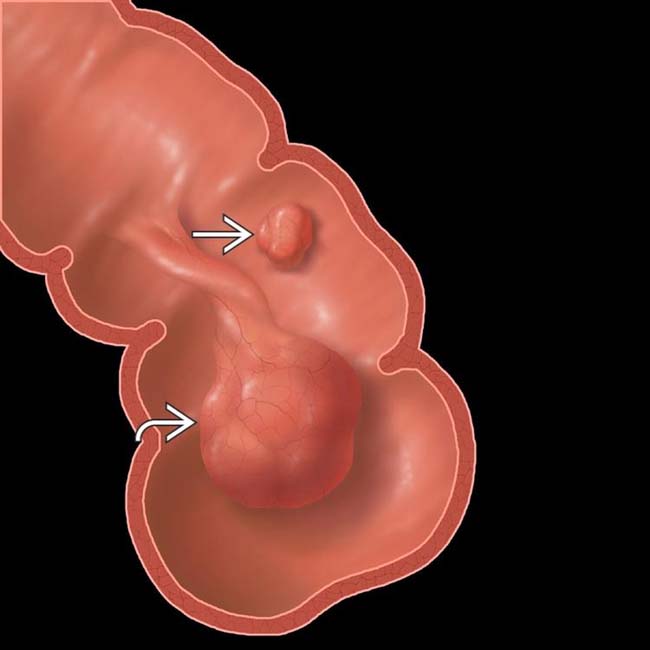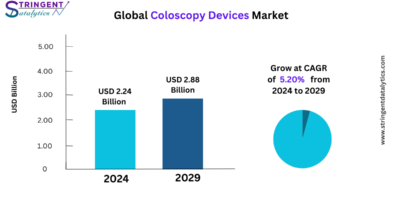The Polyps Market encompasses the diagnosis, treatment, and management of polyps, which are abnormal tissue growths that can develop in various parts of the body, most commonly in the colon, nasal passages, and uterus. The market is driven by the rising incidence of polyps due to factors like aging populations, lifestyle changes, and increasing awareness and screening efforts.
Key Factors Driving the Polyps Market:
- Rising Incidence of Polyps:
- The prevalence of polyps, particularly colorectal polyps, is increasing due to factors such as aging populations, poor dietary habits, obesity, and sedentary lifestyles. Early detection and removal are crucial to prevent the progression to cancer.
- Increased Screening and Awareness:
- Growing awareness about the importance of regular screenings, such as colonoscopies, has led to earlier detection of polyps. Public health initiatives and recommendations from medical associations have contributed to increased screening rates.
- Advancements in Diagnostic Technologies:
- Technological advancements in imaging and diagnostic tools, such as high-definition endoscopes, CT colonography (virtual colonoscopy), and capsule endoscopy, have improved the detection and characterization of polyps.
- Development of Minimally Invasive Treatments:
- The development of minimally invasive procedures, such as endoscopic mucosal resection (EMR) and endoscopic submucosal dissection (ESD), has revolutionized the treatment of polyps, offering effective removal with reduced patient recovery time and fewer complications.
- Growing Prevalence of Risk Factors:
- The increasing prevalence of risk factors for polyps, including inflammatory bowel disease (IBD), genetic predispositions (such as Lynch syndrome and familial adenomatous polyposis), and environmental factors, drives the demand for diagnostic and therapeutic interventions.
Market Segmentation:
- Type of Polyp:
- Colorectal Polyps: The most common type, with significant focus due to the potential progression to colorectal cancer.
- Nasal Polyps: Noncancerous growths in the nasal passages or sinuses, often associated with chronic sinusitis and allergies.
- Uterine Polyps: Benign growths in the lining of the uterus, also known as endometrial polyps, which can cause irregular bleeding and impact fertility.
- Other Polyps: Including gastric, cervical, and bladder polyps, which require specialized diagnostic and treatment approaches.
- Diagnosis:
- Endoscopy: The primary method for detecting polyps, including colonoscopy, sigmoidoscopy, and hysteroscopy.
- Imaging Techniques: Such as CT colonography, MRI, and ultrasound for non-invasive detection and assessment.
- Biopsy: Used to confirm the nature of polyps and rule out malignancy.
- Treatment:
- Endoscopic Removal: Techniques like polypectomy, EMR, and ESD for minimally invasive removal of polyps.
- Surgical Resection: Required for larger or difficult-to-access polyps, often performed laparoscopically.
- Medications: For managing symptoms associated with nasal polyps or preventing recurrence after removal.
- Watchful Waiting: Monitoring smaller, asymptomatic polyps with regular follow-up screenings.
- End Users:
- Hospitals: Major providers of diagnostic and therapeutic services for polyps.
- Ambulatory Surgical Centers (ASCs): Offering outpatient procedures for polyp removal.
- Specialty Clinics: Including gastroenterology, otolaryngology, and gynecology clinics.
- Diagnostic Centers: Providing imaging and endoscopic services for polyp detection.
Market Trends:
- Emphasis on Preventive Healthcare:
- Increasing focus on preventive healthcare and regular screenings to detect and remove polyps early, reducing the risk of cancer development.
- Integration of Artificial Intelligence:
- AI and machine learning are being integrated into diagnostic tools to enhance the accuracy and efficiency of polyp detection during endoscopic procedures.
- Patient-Centric Approaches:
- Growing emphasis on patient-centric care, including personalized treatment plans and minimally invasive techniques to improve patient outcomes and satisfaction.
- Telemedicine and Remote Monitoring:
- Adoption of telemedicine for initial consultations, follow-up care, and remote monitoring of patients with a history of polyps, especially in underserved areas.
- Expansion of Screening Programs:
- Expansion of national and regional screening programs for colorectal cancer, increasing the detection and management of polyps.
Challenges:
- Accessibility and Cost:
- Limited access to advanced diagnostic and treatment facilities in low-resource settings and the high cost of procedures like colonoscopy can be barriers to widespread screening and treatment.
- Compliance with Screening Guidelines:
- Ensuring patient compliance with screening guidelines and follow-up recommendations is crucial for effective polyp management.
- Differentiating Benign from Malignant Polyps:
- Accurately distinguishing between benign and potentially malignant polyps remains a diagnostic challenge, necessitating advanced imaging and biopsy techniques.
- Risk of Recurrence:
- Managing the risk of polyp recurrence, particularly for high-risk patients, requires ongoing monitoring and possibly additional interventions.
Future Outlook:
The Polyps Market is expected to continue its growth trajectory, driven by technological advancements in diagnostics and treatment, increased awareness and screening efforts, and the rising prevalence of risk factors. The integration of AI, the expansion of telemedicine, and patient-centric approaches will further enhance the effectiveness and accessibility of polyp management. Addressing challenges related to accessibility, cost, and compliance will be key to maximizing the potential of the polyps market and improving patient outcomes globally.
Click Here, To Get Free Sample Report https://stringentdatalytics.com/sample-request/polyps-market/14005/
Market Segmentations:
Global Polyps Market: By Company
Millennium Surgical
Black Smith Surgical
Braun Melsungen
Medtronic
Endo Pharmaceuticals
Cook Medical
Pfizer
Teva Pharmaceutical Industries
Novartis
Sun Pharmaceuticals
Mylan
Global Polyps Market: By Type
Digestive Polyps
Endometrial Polyp
Cervical Polyp
Nasal Polyps
Laryngeal Polyps
Global Polyps Market: By Application
Hospitals & Clinics
Academic and Research
Global Polyps Market: Regional Analysis
The regional analysis of the global Polyps market provides insights into the market’s performance across different regions of the world. The analysis is based on recent and future trends and includes market forecast for the prediction period. The countries covered in the regional analysis of the Polyps market report are as follows:
North America: The North America region includes the U.S., Canada, and Mexico. The U.S. is the largest market for Cold-chain Pharma in this region, followed by Canada and Mexico. The market growth in this region is primarily driven by the presence of key market players and the increasing demand for the product.
Europe: The Europe region includes Germany, France, U.K., Russia, Italy, Spain, Turkey, Netherlands, Switzerland, Belgium, and Rest of Europe. Germany is the largest market for Cold-chain Pharma in this region, followed by the U.K. and France. The market growth in this region is driven by the increasing demand for the product in the automotive and aerospace sectors.
Asia-Pacific: The Asia-Pacific region includes Singapore, Malaysia, Australia, Thailand, Indonesia, Philippines, China, Japan, India, South Korea, and Rest of Asia-Pacific. China is the largest market for Cold-chain Pharma in this region, followed by Japan and India. The market growth in this region is driven by the increasing adoption of the product in various end-use industries, such as automotive, aerospace, and construction.
Middle East and Africa: The Middle East and Africa region includes Saudi Arabia, U.A.E, South Africa, Egypt, Israel, and Rest of Middle East and Africa. The market growth in this region is driven by the increasing demand for the product in the aerospace and defense sectors.
South America: The South America region includes Argentina, Brazil, and Rest of South America. Brazil is the largest market for Cold-chain Pharma in this region, followed by Argentina. The market growth in this region is primarily driven by the increasing demand for the product in the automotive sector.
Click Here, To Buy Premium Report https://stringentdatalytics.com/purchase/polyps-market/14005/?license=single
Reasons to Purchase this Market Report:
- The competitive environment includes the proportions of important players, recent innovations, and strategy.
- Companies with extensive product offerings, pertinent financial data, recent advancements, SWOT analyses, and player tactics.
- Quantitative, qualitative, value (in USD million), and volume (in units million) data are among the segments and sub-segments.
- The research contains a wealth of data, including market dynamics and opportunities throughout the forecast period.
- Data at the regional, sub-regional, and national levels also provides information on the market’s supply and demand dynamics.
About Stringent Datalytics
Stringent Datalytics offers both custom and syndicated market research reports. Custom market research reports are tailored to a specific client’s needs and requirements. These reports provide unique insights into a particular industry or market segment and can help businesses make informed decisions about their strategies and operations.
Syndicated market research reports, on the other hand, are pre-existing reports that are available for purchase by multiple clients. These reports are often produced on a regular basis, such as annually or quarterly, and cover a broad range of industries and market segments. Syndicated reports provide clients with insights into industry trends, market sizes, and competitive landscapes. By offering both custom and syndicated reports, Stringent Datalytics can provide clients with a range of market research solutions that can be customized to their specific needs.
Contact Us
Stringent Datalytics
Contact No- +1 346 666 6655
Email Id- sales@stringentdatalytics.com
Web- https://stringentdatalytics.com/




Leave a Reply